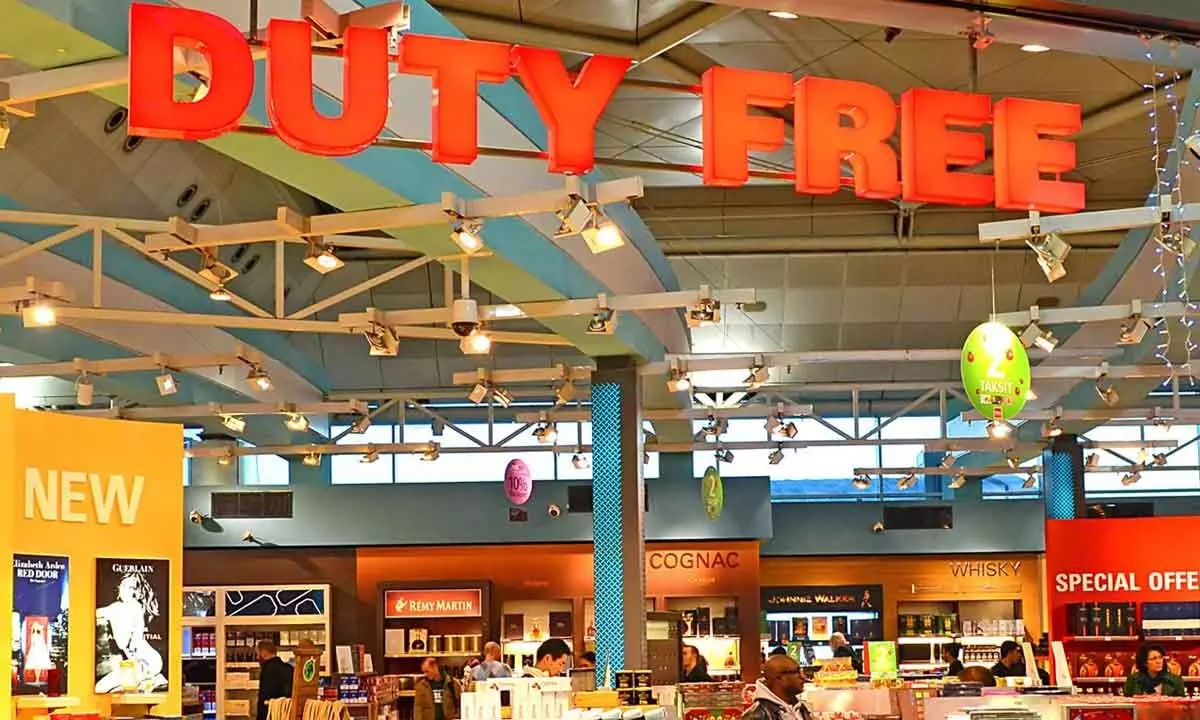Indian duty free market poised to grow significantly in 5 years
Collaborative alliances between luxury and premium brands are boosting the travel retail sector
image for illustrative purpose

The global duty-free and travel retail market size is estimated at $ 75.63 billion in 2024, and is expected to reach $121.09 billion by 2029, growing at a CAGR of 9.87% during the forecast period (2024-2029).
This market generated $ 56.35 billion revenue in 2022 and is projected to grow at a CAGR of 9.48% from 2023 to 2032.
There is an expectation that the market will reach $ 139.39 billion by 2032. It is experiencing growth driven by several factors, including the steady rise in disposable income due to increasing urbanization worldwide, the growth of leisure and business travel, and evolving consumer preferences favouring on-the-go shopping.
Collaborative alliances between luxury and premium brands present a promising opportunity within the travel retail sector.
The rising popularity of the travel and tourism industry is one of the primary factors driving the growth of the duty-free and travel retail market. Duty-free and travel retail provides temporary spaces that offer extra time to end users after security check-in and allow them to get entertained and indulgent with the ambiance and experience of shopping for international products. The increasing focus on digitalizing the retailing process, so that companies can maximize their profits, may boost sales in the market. The growing demand for retail chains that offer luxury and premium brands of various products are augmenting the growth of the duty-free and travel retail market.
On their part, distribution channels offer value to passengers, enhance their experiences while traveling, and add value to economic activities. The low customer interest in shopping at airports is expected to restrain the growth of the market at these stores, owing to reasons, such as lack of promotion campaigns at these stores and high prices of products. Several companies are partnering with duty-free stores to launch their limited or exclusive product, which is driving market growth.
By product type, the wines and spirits segment is expected to gain a major share during the forecast period.
Asia-Pacific occupied more than one-third of the market share. It is expected to grow at a significant rate during the forecast period. The increasing number of new air routes and the introduction of LCC carriers are among the main factors promoting the development of the Asia-Pacific duty-free and travel retail market. The rise in consumption and purchasing power across China and India may have a positive impact on the market in this region, thanks to the growing preference for differentiated and value-added products is boosting people's desire to travel. This, in turn, is expected to increase the demand in the duty-free industry. The adoption of new lifestyles and the introduction of cheap destination travel packages by companies like MakeMyTrip, Cleartrip, and GoIbibo, may result in the growth of the global duty-free and travel retail market.
Furthermore, the rapid penetration of social media and digitalization in the economy is expected to create lucrative opportunities for vendors operating in the Asia-Pacific market during the forecast period.
The India travel retail market size is estimated at $ 2.03 billion in 2024 and is expected to reach $ 5.40 billion by 2029, growing at a CAGR of 21.59% during the forecast period (2024-2029).
Travel retail is the next great frontier of the Indian retail sector. As people's incomes rise, India's position as a business powerhouse and tourist destination will also continue to solidify, leading to the growth and prosperity of this industry.
A combination of a large and growing population, increasing air connectivity, inbound tourism, and the growing disposable incomes and propensity to travel internationally by India's middle class are some of the major factors fuelling the growth of India's travel retail market.
As per research, it is estimated that nearly 80% of the country's duty-free shoppers are Indians, which is quite unlike other markets in the region, such as Korea or Thailand, where most duty-free sales are from international travelers rather than local travelers. However, this is likely to change with the growth in international tourism in the country. While India accounts for only 10.7% of the Asia Pacific region's total international tourist arrivals, its year-on-year growth rate has been well above the region's average in recent years. As of 2020, India attracted nearly 6.3 million international tourists. The changes by the Union Government to its e-visa regime are simplifying procedures, making it friendlier to international tourists. These developments will further help in the growth of the country’s travel retail market.
Nearly 50% of an international airport's revenue is generated from duty-free and travel retail activities. The largest duty-free area in India is currently operated by Mumbai Duty-Free at Mumbai International Airport Limited (MIAL), followed by New Delhi International Airport Limited (DIAL), which is operated by New Delhi Duty-Free Services (DDFS).

